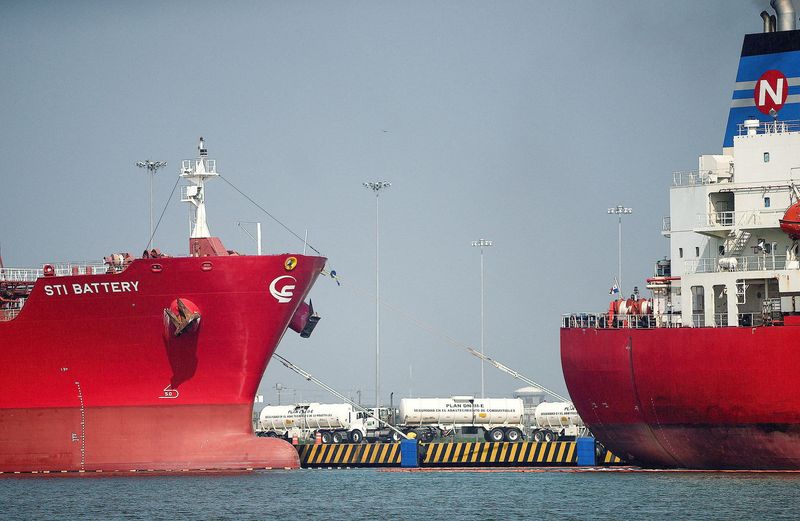
By Arunima Kumar
(Reuters) -Oil prices were steady on Tuesday, after rising more than $1 in the previous session, as traders assessed concerns over U.S. production in the aftermath of Hurricane Francine and also the prospect of lower U.S. crude stockpiles.
Focus was also on the U.S. Federal Reserve’s policy meeting that will conclude on Wednesday.
Brent crude futures for November held their ground at $72.77 a barrel, as of 0815 GMT. U.S. crude futures for October inched 12 cents higher, or 0.17%, to $70.21 a barrel.
Still, fears of weaker demand in top oil importer China weighed on market sentiment. China’s oil refinery output fell for a fifth month in August amid declining fuel demand and weak export margins, government data showed on Saturday.
“Despite another wave of weak economic data from China over the weekend acting as a cap, some of the earlier short positions that are well into the money will be covered by profit-taking, in our view, as the Fed moves to cut its policy rate, which should help nudge oil prices towards the middle of their new range,” said Harry Tchilinguirian, head of research at Onyx Capital Group.
Both contracts settled higher in the previous session as output remained constrained with more than 12% of crude production and 16% of natural gas output in the U.S. Gulf of Mexico remained offline due to Hurricane Francine, according to the U.S. Bureau of Safety and Environmental Enforcement (BSEE) on Monday.
The Fed is expected to start its easing cycle on Wednesday, with Fed funds futures showing markets are now pricing in a 69% chance that the U.S. central bank will cut rates by 50 basis points.
“The Fed is expected to lower interest rates for the first time in more than four years this week … but recent weak economic data and hawkish comments by members of the Fed have led investors to believe the move could be more aggressive,” Panmure Liberum analyst Ashley Kelty said.

A lower interest rate will reduce the cost of borrowing and can potentially lift oil demand by supporting economic growth.
Investors also eyed an expected drop in U.S. crude inventories, which likely fell by about 200,000 barrels in the week ended Sept. 13, based on a Reuters poll. [EIA/S]
This post is originally published on INVESTING.




